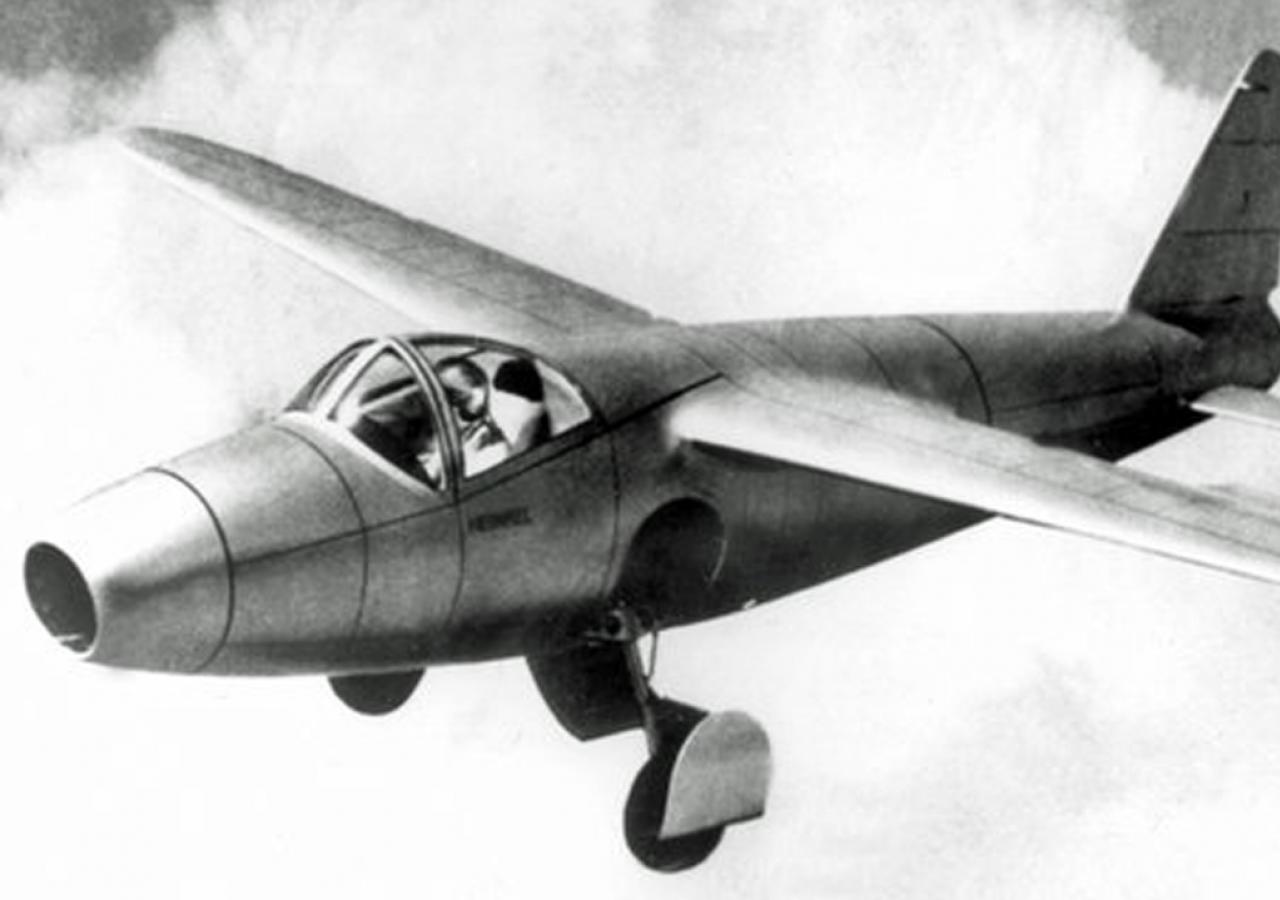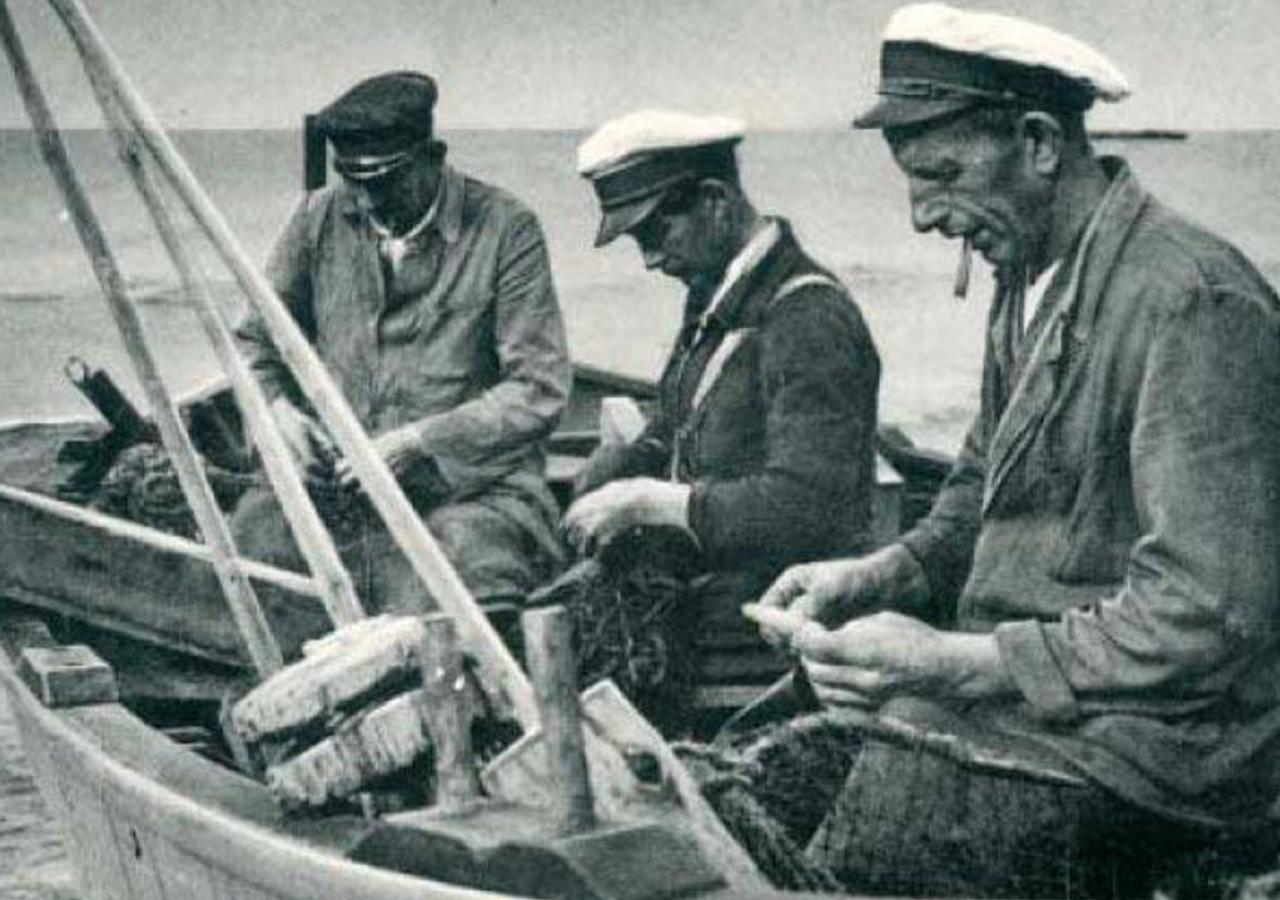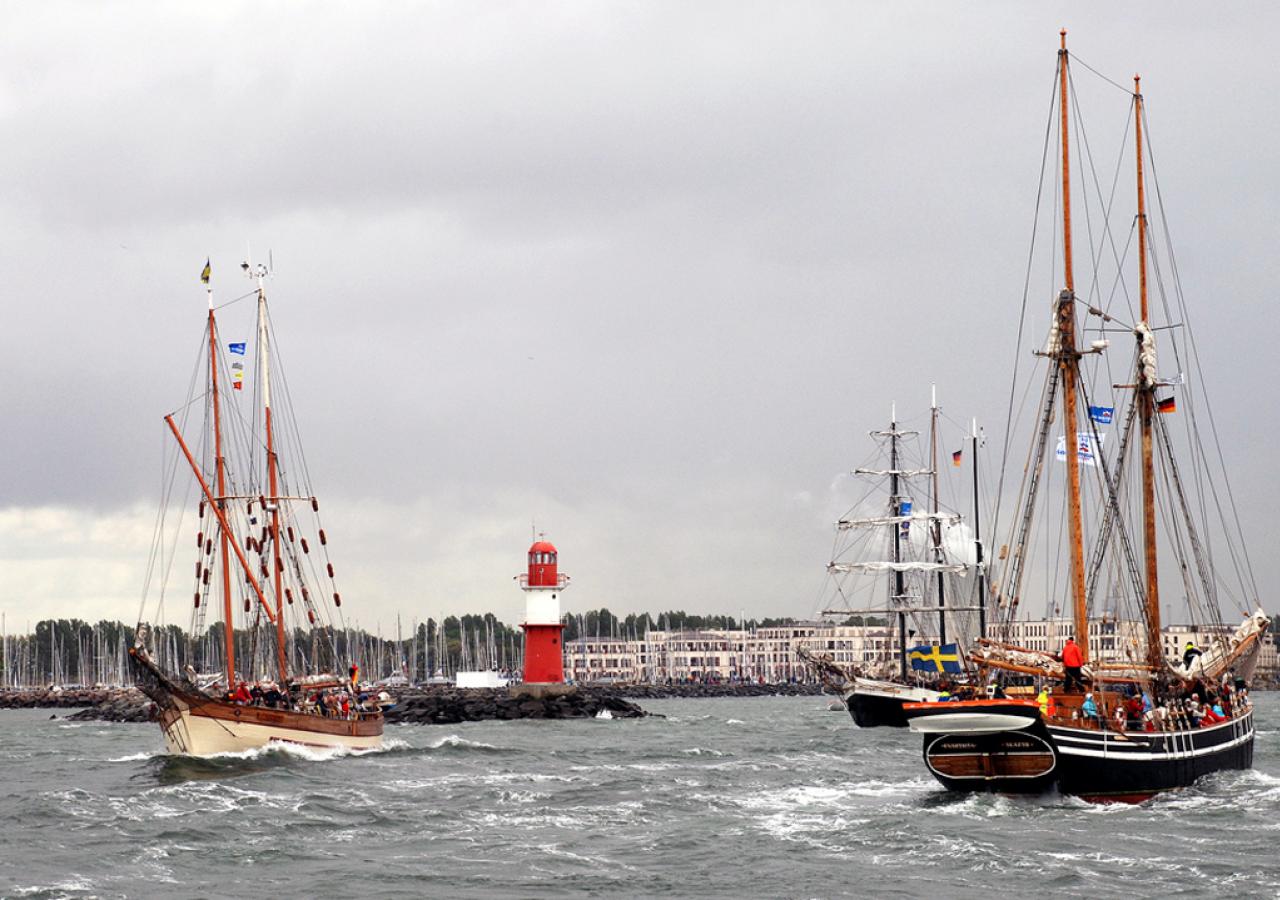On 01 December 1922 the " Ernst Heinkel Flugzeugwerke Warnemünde " were founded by Ernst Heinrich Heinkel .
The airplane factory catapulted Rostock and Warnemünde on the worldmap and were a breakthrough in industrialization.
Rostock was a modern metropolis and former high-tech location.
The 1352 patents in the field of aviation and 587 rights in the engine area testify to the enormous inventiveness of this aircraft plants .
States such as Sweden, Denmark , Finland, Hungary, Russia , and even Japan and China acquired machines or licenses.
Among the inventions of world importance include :
- Development of the board catapults, with the help of Heinkelsche board aircraft
(He 12 and He 58) of fast steamers the "Post advance Flights " on the
Transatlantic routes to North America with a time saving of more than
24 hours ( testing beginning 1927)
- Heinkel He 70 (1932 ) , the world's fastest commercial airplane , in modern
monocoque construction with retractable landing gear
- He 111 (1934) , initially as a fast airliner ordered on behalf of Deutsche
Lufthansa, evolved into the standard Luftwaffe bomber from 1937
- He 176 (1939) , the first aircraft in the world with a controllable rocket engine
- Development of the first turbojet He S 3
- He 178 , the first aircraft with turbine jet engine , first flight 27 August 1939
first jet aircraft in the world
- Development of the ejection seat (1939 )
Towards the end of the Second World War the " Ernst Heinkel AG " Rostock was in its business the largest in its industry.
Of the total of 55 000 employees of EHAG 1945 about 17 000 workers were employed for this group alone in Rostock.
But among the 17 000 were thousands of forced laborers , prisoners of war and concentration camp inmates who had to work in the factory.
After the end of World War II, the Allies confiscated the area located on the bottom of the Soviet zone of occupation and later GDR property of EHAG on the basis of the Potsdam Agreement.
The bombing raids already heavily damaged plants and buildings of Ernst Heinkel Flugzeugwerke were dismantled and blown up.
Today the only thing remebering the Heinkel Factory is a windowless brick wall at the Ernst Heinkel Flugzeugwerke .
The ten meter high and about thirty feet long wall is a historical monument since 1993 .
From the remaining bricks of the Heinkel Factory the building today was constructed in 1954.
The building was used for administrational purposes of the "Fischkominat" of Rostock till the fall of the german wall.
(Quelle: http://www.ostsee.de/schon-gewusst/heinkel-werke.html)
Still to this day it is believed that the building was run by the STASI because there is a very large telephone system in the basement.
It can be visited on request today.
Since 2004 the brick building is a hotel occupying up to 10.000 guests a year.
The hotel goes through constant modernisation phases. The last one being in 2012.
The airplane factory catapulted Rostock and Warnemünde on the worldmap and were a breakthrough in industrialization.
Rostock was a modern metropolis and former high-tech location.
The 1352 patents in the field of aviation and 587 rights in the engine area testify to the enormous inventiveness of this aircraft plants .
States such as Sweden, Denmark , Finland, Hungary, Russia , and even Japan and China acquired machines or licenses.
Among the inventions of world importance include :
- Development of the board catapults, with the help of Heinkelsche board aircraft
(He 12 and He 58) of fast steamers the "Post advance Flights " on the
Transatlantic routes to North America with a time saving of more than
24 hours ( testing beginning 1927)
- Heinkel He 70 (1932 ) , the world's fastest commercial airplane , in modern
monocoque construction with retractable landing gear
- He 111 (1934) , initially as a fast airliner ordered on behalf of Deutsche
Lufthansa, evolved into the standard Luftwaffe bomber from 1937
- He 176 (1939) , the first aircraft in the world with a controllable rocket engine
- Development of the first turbojet He S 3
- He 178 , the first aircraft with turbine jet engine , first flight 27 August 1939
first jet aircraft in the world
- Development of the ejection seat (1939 )
Towards the end of the Second World War the " Ernst Heinkel AG " Rostock was in its business the largest in its industry.
Of the total of 55 000 employees of EHAG 1945 about 17 000 workers were employed for this group alone in Rostock.
But among the 17 000 were thousands of forced laborers , prisoners of war and concentration camp inmates who had to work in the factory.
After the end of World War II, the Allies confiscated the area located on the bottom of the Soviet zone of occupation and later GDR property of EHAG on the basis of the Potsdam Agreement.
The bombing raids already heavily damaged plants and buildings of Ernst Heinkel Flugzeugwerke were dismantled and blown up.
Today the only thing remebering the Heinkel Factory is a windowless brick wall at the Ernst Heinkel Flugzeugwerke .
The ten meter high and about thirty feet long wall is a historical monument since 1993 .
From the remaining bricks of the Heinkel Factory the building today was constructed in 1954.
The building was used for administrational purposes of the "Fischkominat" of Rostock till the fall of the german wall.
(Quelle: http://www.ostsee.de/schon-gewusst/heinkel-werke.html)
Still to this day it is believed that the building was run by the STASI because there is a very large telephone system in the basement.
It can be visited on request today.
Since 2004 the brick building is a hotel occupying up to 10.000 guests a year.
The hotel goes through constant modernisation phases. The last one being in 2012.





